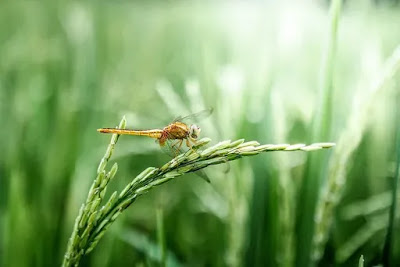Modern boro paddy cultivation
 |
| source: pixabay |
The word Boro is derived from the word hor or baur. Boro paddy was once cultivated in the Hor and Bauer areas of our country. Currently, due to the spread of irrigation, it is also being cultivated in other high lands. During the boro season, the rice plant gets a lot of sunlight, gets more fertilizer but the trees and leaves do not fall down, the fruit set is higher and the yield is higher. Therefore, it is necessary to expand cultivation of modern varieties of Boro paddy in this season. To get good yield of boro paddy, it is necessary to prepare the soil, use balanced amount of organic and chemical fertilizers and timely transplanting and other care properly.
Land ready
To plant rice plants, the land should be sloppy and well prepared. For this, if the soil is slightly soft with water as required in the land, it is necessary to cultivate it four to five times in a straight and horizontal depth of 10-15 cm so that the soil becomes muddy. The soil has to retain water for at least seven days after the first cultivation. As a result of rotting of weeds, straw etc. in the soil, plant food especially ammonium nitrogen increases in the soil.
Apply basic fertilizer
To obtain the expected yield of paddy in the boro season, it is necessary to use sufficient amount of organic and chemical fertilizers in the land. The table mentions fertilizer levels (excluding urea) based on the variety of Boro rice.
Quantity of different types of Boro Paddy Fertilizer (kg / ha)
Plant saplings
30-35 days old transplanting should be carefully picked from the seeds and planted in rows. In this season the distance from the row to the row should be 20-25 cm and the distance from the sprout to the sprout should be 15-20 cm. This distance can be more or less depending on the fertility and diversity of the land. Two to three healthy and vigorous plants should be planted at a depth of 2.5–3.5 cm in each bunch. Planting too deep is not right. It is too late to grow Kushi. Kushi and Kavita are short. When applied at shallow depths, Kushi grows quickly, Kushi and Chara grow more and yields increase. Therefore, for planting at shallow depth, it is better to keep the water at a depth of 1.25 cm at the time of planting. It is convenient to keep the depth of planting in muddy conditions. After planting, a few extra plants have to be left in one corner of the ground. This allows 10–15 days after planting to fill the gaps in areas where transplanting dies from additional planting. As a result, plants of the same age are planted in the land.
Irrigation
If the trees are irrigated as per the requirement, then irrigation water is fully utilized. There is no rule that water should be retained at all times in the land of Boro Paddy. Borough seasons typically require a total of 120 cm of water over the lifetime of the paddy. However, the demand for water doubled from the time of catch thor at the time of milking rice. At this time standing water has to be kept on the ground. This is because if there is no sap in the soil during flowering and flowering, the yield decreases. The amount of water required after planting is given below.
The land should be dried 10-12 days before harvesting. In addition, the land must dry up. This will get rid of the polluted air accumulated in the soil and the plants will be able to take food easily from the soil organic matter.





0 Comments